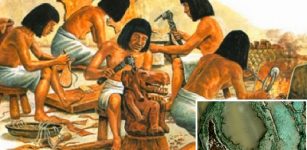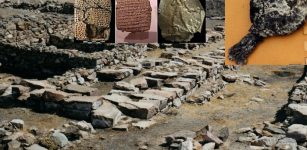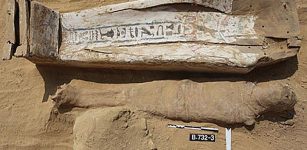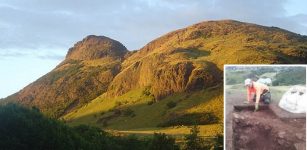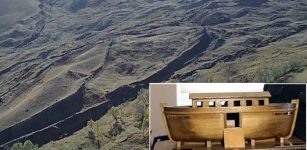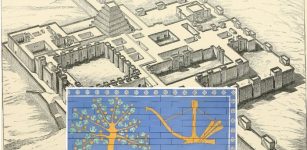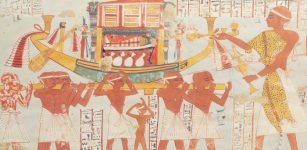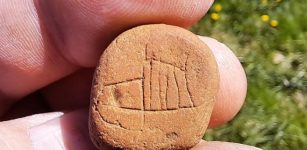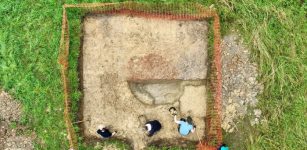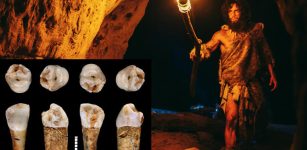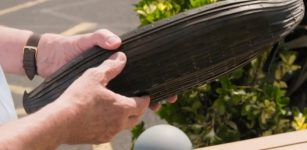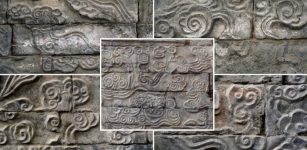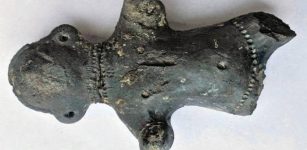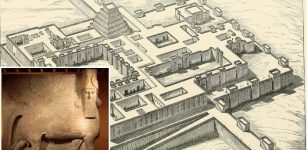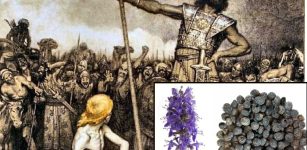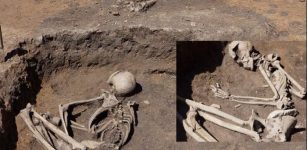900-Year-Old Buddhist Monastery, Sculpture With A Coiled Crown And Chakra Discovered In Eastern India
Conny Waters - AncientPages.com - A Buddhist monastery, believed to be at least 900 years old has been unearthed by archaeologists from ASI (Archaeological Survey of India).
The monastery was buried under a mound in a village situated in a hilly area of Hazaribagh district of Jharkhand.
 Ghoshitaram monastery in Kaushambi. Image credit: Wikipedia
Ghoshitaram monastery in Kaushambi. Image credit: Wikipedia
ASI's archaeologists have excavated ten stone statues of deity Tara and the Buddha in Burhani village near Juljul Pahar of Sitagarhi Hills located around 12 km from district headquarters Hazaribagh.
According to officials, the team found a sculpture that appears to be that of Shaivite deity Maheswari. The sculpture depicts the deity with a coiled crown and chakra, which indicates cultural assimilation in the area.
The finding comes two months after the discovery of an ancient Buddhist shrine, with three rooms buried under a similar mound, barely 100 meters away, in the vicinity of an agricultural land on the eastern side of Juljul Pahar, writes The Indian Express.
 Statues of Buddha and deity Tara among the ruins. Photo: ASI
Statues of Buddha and deity Tara among the ruins. Photo: ASI
According to Niraj Kumar Mishra, an assistant archaeologist from Excavator Branch III of Patna ASI, the shrine unearthed in December 2020, had Tara’s statue, two subsidiary shrines had the Buddha’s.
The findings were significant since the monastery is on the old route to Varanasi, 10 km from Sarnath, where the Buddha gave his first sermon. They said the presence of statues of deity Tara shows possible proliferation of Vajrayana form of Buddhism in this region.
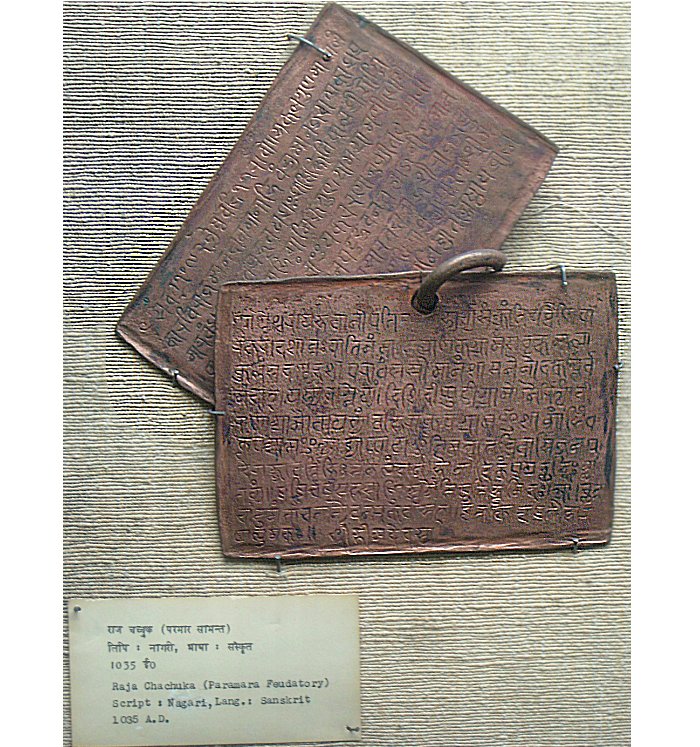 Raja Chachuka (Paramara Feudatory), Sanskrit in Nagari script, 1035 AD. Copper plate, exhibited in the National Museum, New Delhi, India. Image source
Raja Chachuka (Paramara Feudatory), Sanskrit in Nagari script, 1035 AD. Copper plate, exhibited in the National Museum, New Delhi, India. Image source
“Earlier, the context was not clear,” Mishra said, adding that their focus then moved to the second mound, and excavation was started on January 31.
“We concentrated on a mound near Juljul Pahar foothills where we found remnants of a Buddhist monastery-cum-shrine where there are rooms at the sides and an open courtyard. “We found four statues of deity Tara in Varad Mudra [gesture of hand showing dispensing of boons] and six statues of the Buddha in Bhumisparsa Mudra [gesture of hand showing five fingers of right hand towards the earth symbolizing the Buddha’s enlightenment].
So it is a significant finding as deity Tara’s statues mean that this was an important center of Vajrayana sect of Buddhism.”
Vajrayana is a form of Tantric Buddhism, which flourished in India from the 6th to 11th century. Mishra said the ASI has not yet done scientific dating of the structures, but it represents the Pala period based on earlier findings.
“Last year, during excavation we found a script of four-five words and sent it to ASI Mysore for Paleographic dating for historical manuscripts. They said it was a Nagri script and they dated it between 10th century AD to 12th century AD. Nagri is a previous version of Devnagri script and the words indicate Buddhist religious affiliation. This time also we have got Nagri script on a Tara statue.”
The Nagari script is the ancestor of Devanagari, Nandinagari, and another variant; it came during the first millennium CE and was first used to write Prakrit and Sanskrit. The Nagari script has roots in the ancient Brahmi script family. Some of the earliest epigraph evidence attesting to the developing Sanskrit Nagari script in ancient India is from the 1st to 4th century CE inscriptions discovered in Gujarat.
The use of the Nagari script was widely spread by 7th century CE, and had fully evolved into Devanagari and Nandinagari scripts by about the end of the first millennium of the common era.
“This is a significant finding in terms of the spread of Buddhism in Jharkhand. However, it is also a matter of research and further findings,” ASI Patna Superintending Archaeologist Rajendra Dehuri commented.
Written by Conny Waters - AncientPages.com Staff Writer

